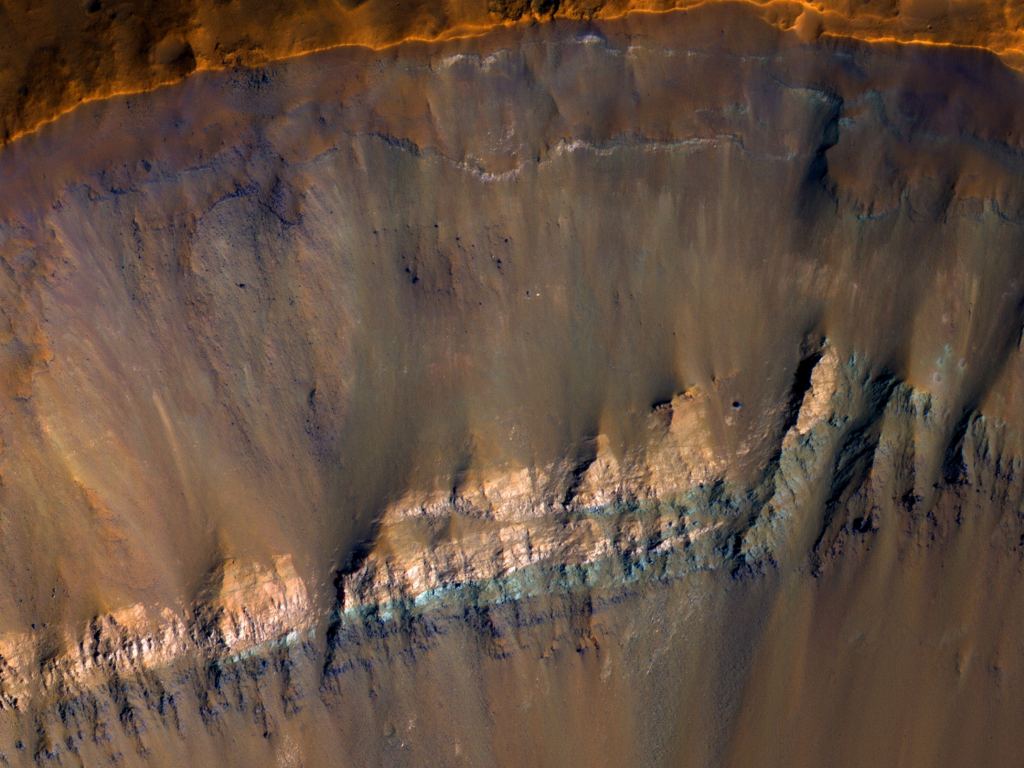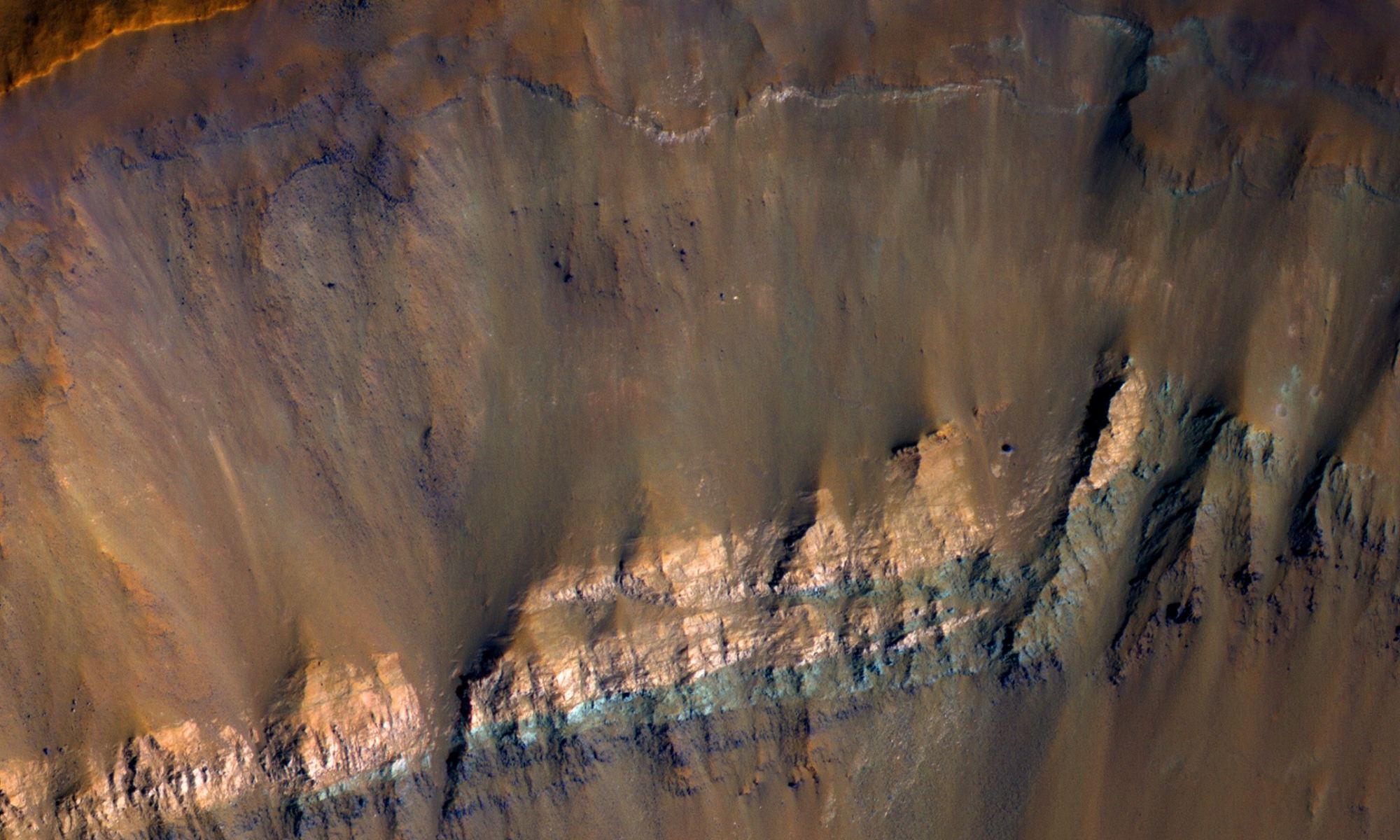Impact craters have been called the “poor geologists’ drill,” since they allow scientists to look beneath to the subsurface of a planet without actually digging down. It’s estimated that Mars has over 600,000 craters, so there’s plenty of opportunity to peer into the Red Planet’s strata – especially with the incredible HiRISE (High Resolution Imaging Science Experiment) camera on board the Mars Reconnaissance Orbiter which has been orbiting and studying Mars from above since 2006.
This beautiful image shows the interior of an impact crater in the Hellas Planitia region of Mars – just north of the gigantic Hellas impact basin located in the southern hemisphere of Mars. This nameless crater is about 6 to 7 kilometers wide in total, but this partial image shows about 1 km of width inside the crater wall. Partway down from the crater rim is a prominent bright layer of bedrock.
HiRISE can operate in visible wavelengths – the same as human eyes — but it also uses near-infrared wavelengths to obtain information on the mineral groups present.

The HiRISE team said the colors in this image are enhanced in infrared, and the data shows three distinct bedrock colors: yellow, light blue-green, and dark blue. The colors correspond to different types of rock that were deposited from the impact as nearly flat-lying sheets, perhaps a combination of lava flows and sediments.
The blue colors in HiRISE infrared often correspond to minerals like olivine and pyroxene that are common in lava. Other banded olivine-bearing layers also show up as yellow, which in some places have been partially or wholly altered to carbonate, giving it a green blue color, and light blue can correspond to iron or magnesium.

Over the years, HiRISE has photographed thousands of targeted swaths of Mars’ surface in unprecedented detail. HiRISE has captured such amazing things as avalanches, towering dust devils, and much more. From an altitude that varies from 200 to 400 kilometers (about 125 to 250 miles) above Mars, HiRISE acquires surface images containing individual, basketball-size (30 to 60 centimeters, or 1 to 2 feet wide) pixel elements, allowing surface features 4 to 8 feet across to be resolved. These high-resolution images provide unprecedented views of our neighboring planet.

